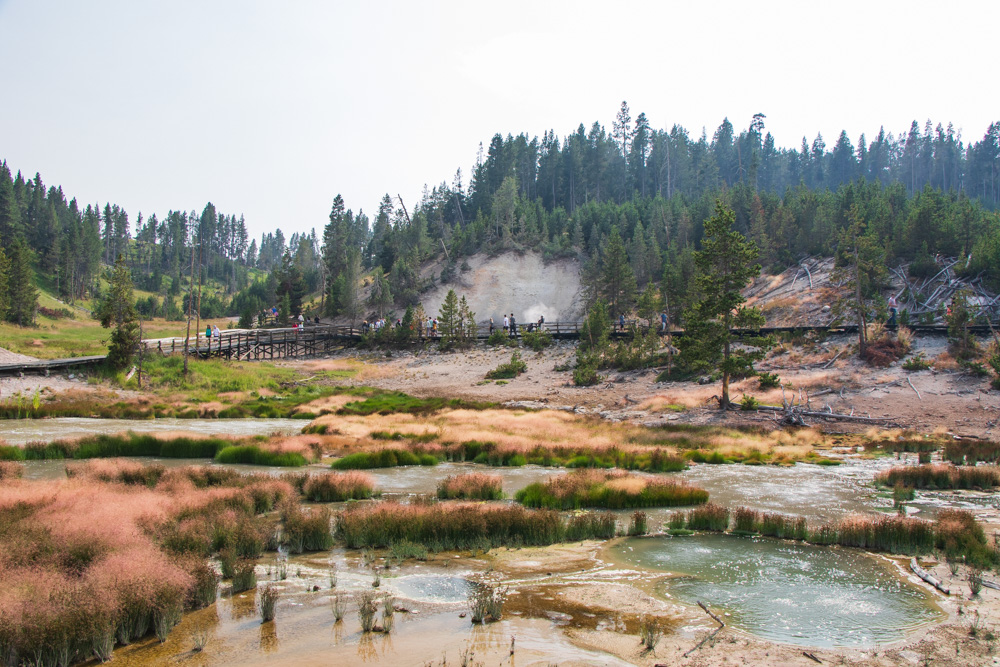Grand Canyon

After the Yellowstone caldera erupted, the area was covered in rhyolite lava flows. The incredible shape and colours of the canyon are the result of this rhyolite rock and hydrothermal activity.
At one time, this area was an active geyser basin. The chemical and heat action of the geysers hydrothermally altered the rock, making it soft and brittle. This allowed a glacier, and now the Yellowstone River, to carve a 39km long, 380m deep canyon into the rock. The colours of the canyon walls are the result of iron compounds in the rhyolite. The variety of oranges and yellows in the valley are where these iron compounds have oxidised with erosion.
Hayden Valley

Hayden Valley is a large alpine valley in amongst the forest. The bare, bright green plains are a stark contrast the dense lodgepole pine groves which cover 80% of the park.

Our time in Canadian National Parks has taught us that watching for the traffic jams is a sure way to spot wildlife! We rounded a corner in Hayden Valley (known for its wild life) and crawled down a road lined with bison. Bison are big! They are strangely proportioned with broad, muscular shoulders and shaggy coats (mainly on their head and necks). Bison can be up to 3.5 meters long and weigh up to 1000kg! They are not to be messed with. However, that doesn't stop some people getting crazily close to take photos. We got a great view of this one (from the safety of our car).
Mud Volcano, Mud Geyser, Sulphur Cauldron, and Black Dragon Cauldron

We walked the 1km boardwalk around a series of hydrothermal features. The ground is continually changing as tiny (and some not so tiny) tremors and changes in pressure alter the underground plumbing of the area. The boardwalk led us between steaming sulphurous fumaroles and sloppy bubbling mud puddles. Staying on the boardwalk was very important, as the whole area was extremely active. Several signs demonstrated how the area has dramatically changed in the last few decades.

